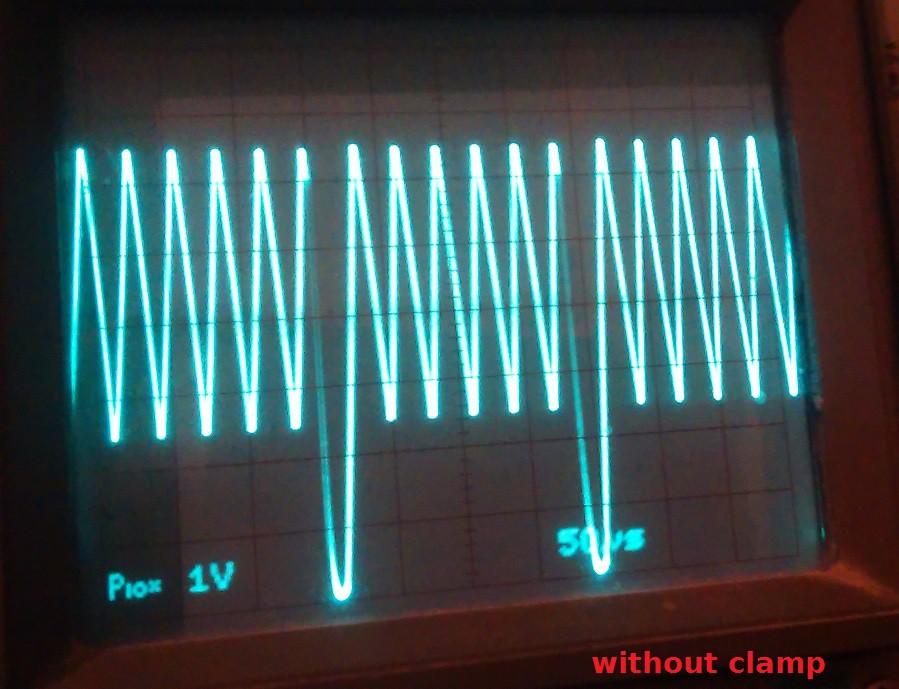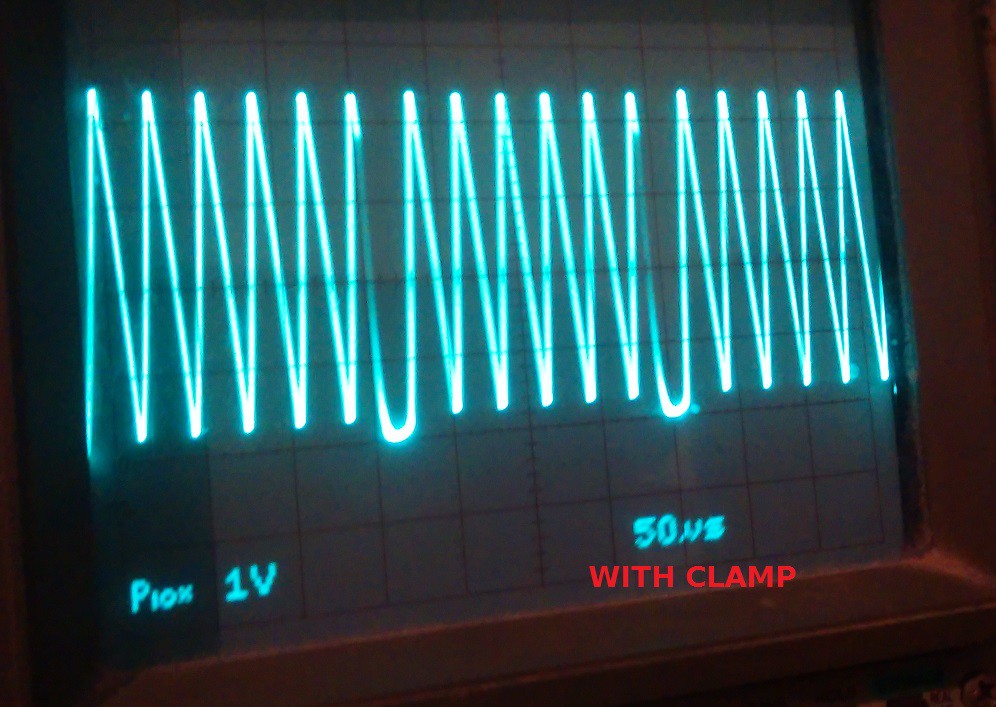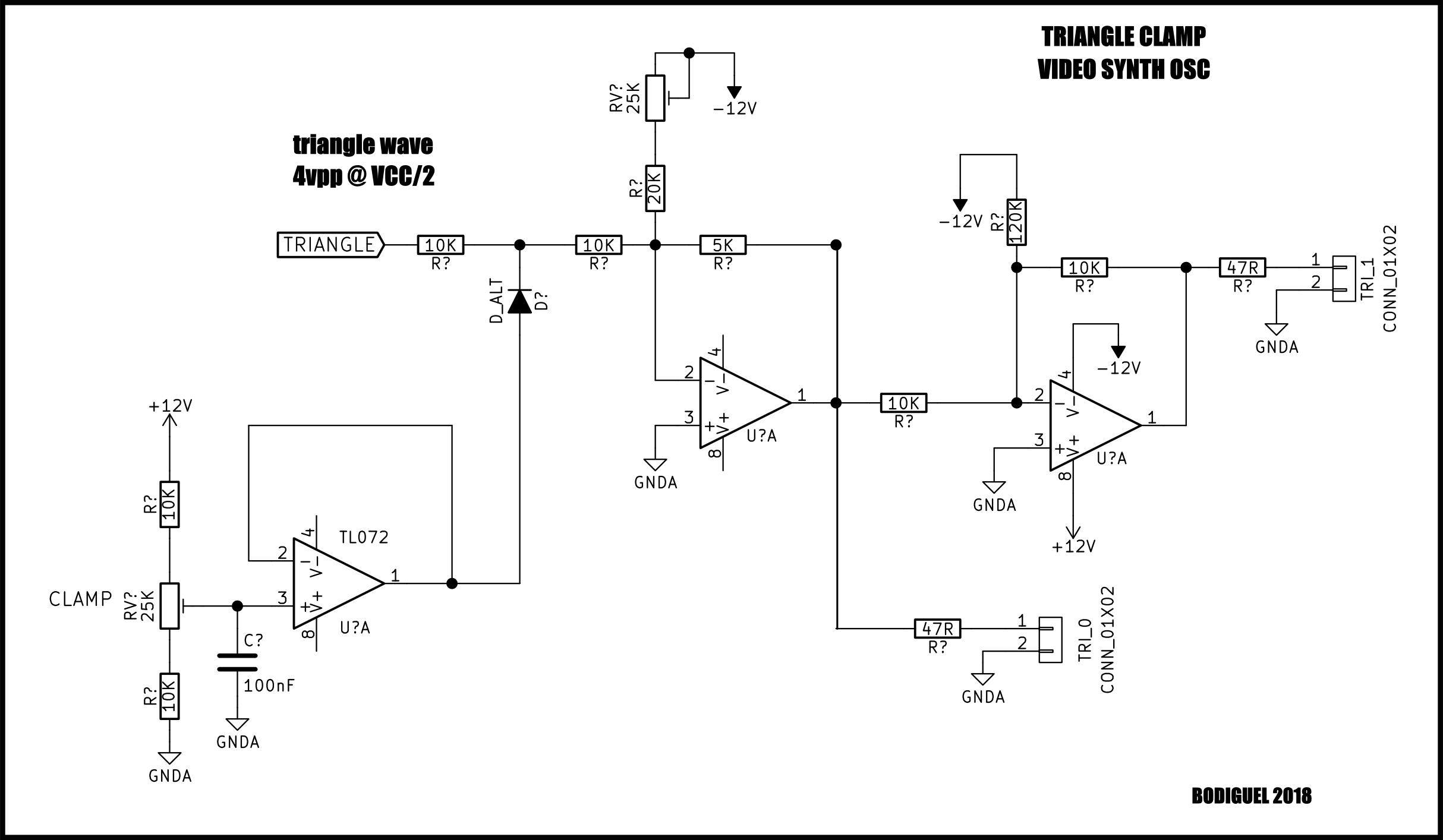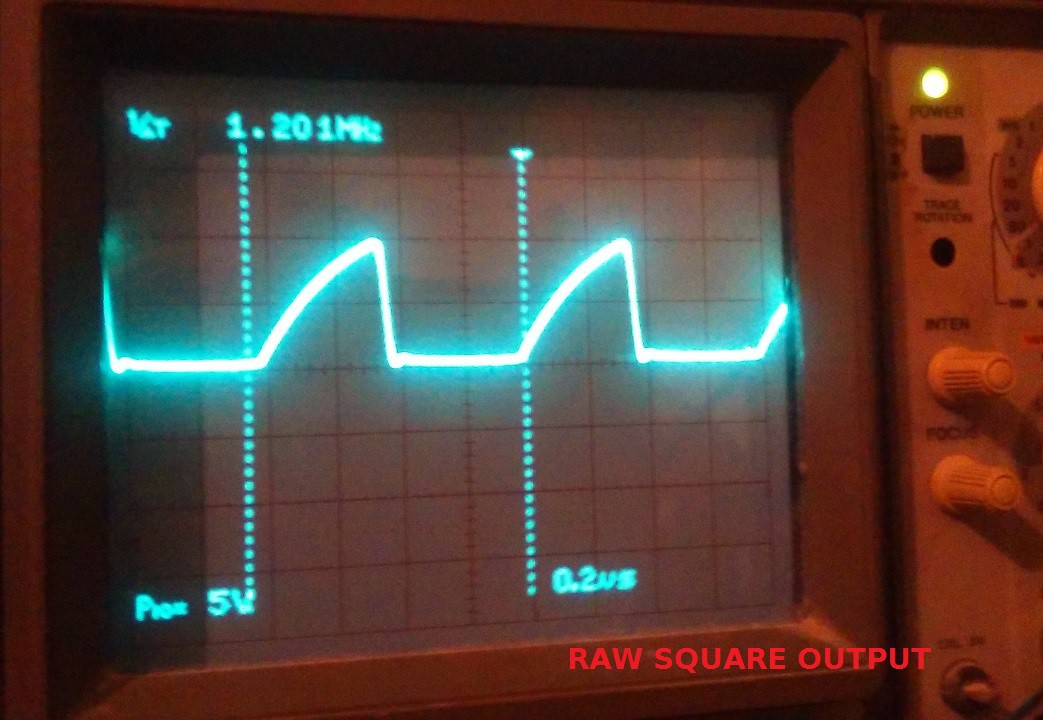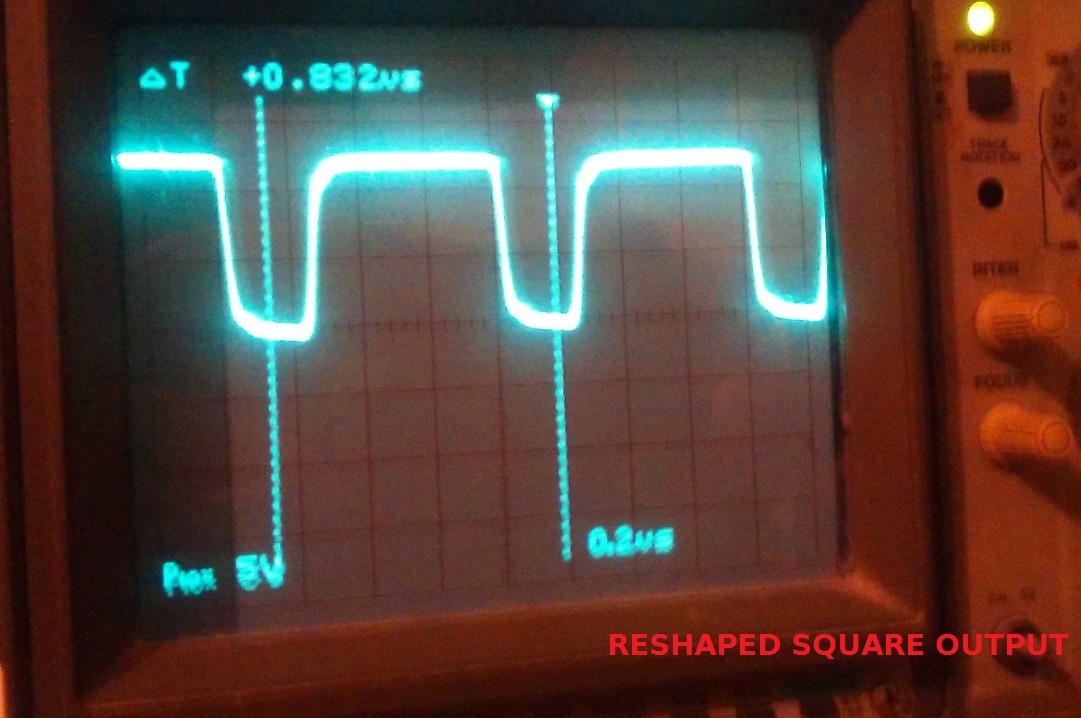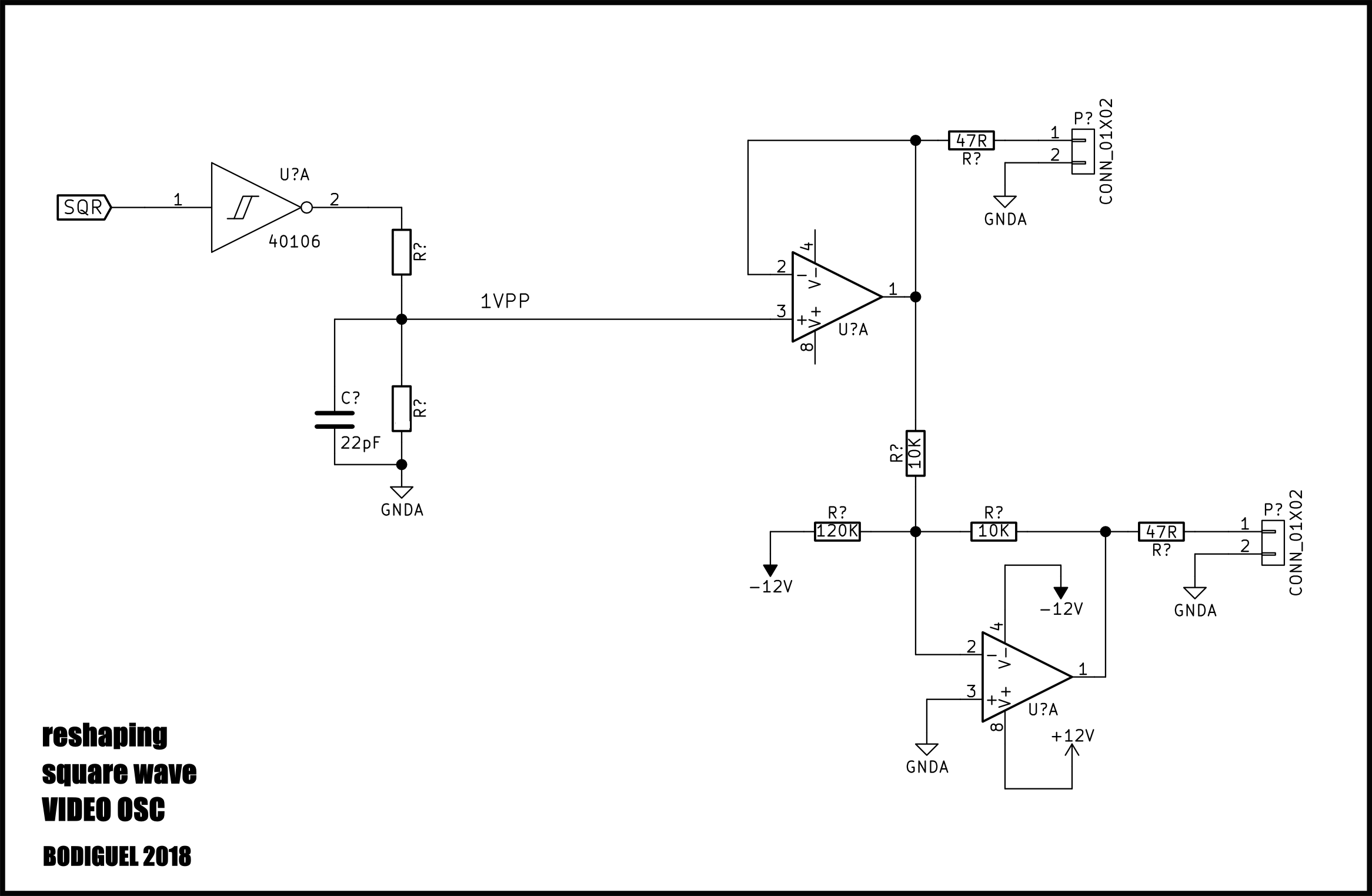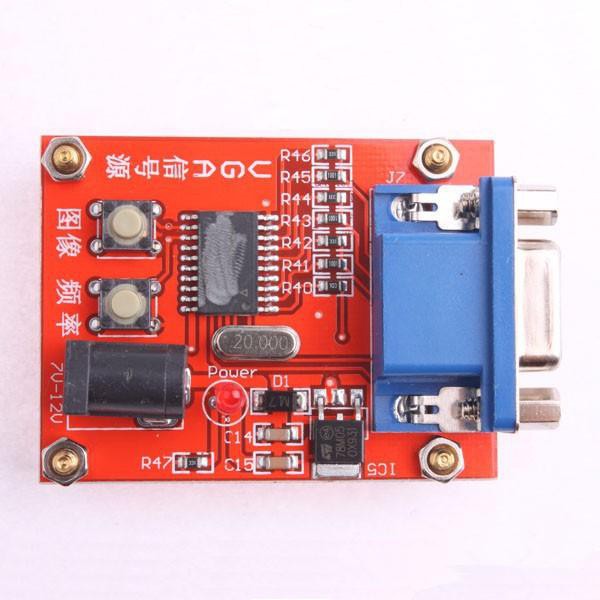-
VCO CORE
01/13/2018 at 21:19 • 0 commentsThe VCO are an essential piece of the project. They will produce the shapes and contours of the images. The VCOs will be all the same. They will have a large range from 1 or 2 minutes to 1Mhz (despite the fact that the waveforms are less neat around this frequency).
1Mhz is actually a small limit for the VGA scanline. Meaning that once locked the vco will produce less vertical bar that it can produce horizontal bar (vertical sync). This is the result of a scanline twice faster that the one used in PAL or NTSC (about 15Khz). Although test will be run to run the clock generator lower.
The VCO is using the XR2206, obsolete but still available from China. Are they counterfeit? Clone? Rejected part at the factory? I don't really care as long as they work. Some external corrections are needed to constrain the waveforms into what it is expected for the project.
RESET CIRCUIT
To get stable image we need to lock the vco to the monitor clocks (H sync or V sync) and the XR2206 hasn’t got a dedicated pin for it. I manage to get the VCO to reset but it creates a «tick» in the waveform that should be removed for processing. This is done with a clamp circuit that reduce the negative peak. The two other op-amps are here to make the waveform into the 1VDC signal range.
![]()
![]()
![]()
SQUARE WAVE
Approaching the MHZ range, the square output tends to become something else. I needed to create a kind of « reshaper » circuit to get back a proper square wave or at least something less ugly.
![]()
![]()
![]()
-
OUTPUT DRIVER AND BLANKING
01/10/2018 at 13:28 • 0 commentsFor the display, two things are mandatory. Video output drivers and blanking.
Each vga color wire is terminated by a 75R resistor, hence the need for special op-amp able to drive such high load. I'm using the LM6181 op amp which seems to be now obsolete. I may switch for the MAX4392 or equivalent if I need to.
The blanking is done by using the horizontal sync signal. Documentations show a particular signal timing for the blanking of colors but my tests gave the expected result on two different monitors. Maybe the monitors create the needed blanking.
Considering the limited space in the case I'll probably use (an old tool box) a switch is present to send a monochrome signal, letting the color's VCA (if there's any) be used for others tasks. Monochrome is achieved by driving the RGB signals with the same signal (all three colors at full brightness give white).
![]()
For the prototyping stage a cheap vga signal generator from ebay is used. It gives timing signals and color input. It'll be replaced by a STM32f0 microcontroller.![]()
-
CONCEPT
01/10/2018 at 12:50 • 0 commentsI've been interested in video creation and modification for a long time, right after I've read about the Sandin project, the synkie project and LZX industries modules.
All use the composite analog video protocol (PAL/NTSC). It's a complicated signal that combined the synchronisation signals needed for the monitor and the color informations into one signal !
This signal contains digital (sync signals) and analog parts(colors).
It requires large bandwith that most op-amps can't handle, at least 3Mhz.Being an old analog protocol, it tends to disappear. Analog tv is a thing of the past now and monitor with composite input will certainly vanish as well. I don't even need to mention the death
of cathode ray monitor.Two reasons for the choice of VGA, the obsolescence of the PAL and the simpler protocol of the VGA. The VGA protocol is simpler, the monitor receives all the signal on different wires.
I want to keep the all project simple and as cheap as possible (the most difficult part I guess).
I decided to take the LZX Industries standard for signals (1Vpp DC)
